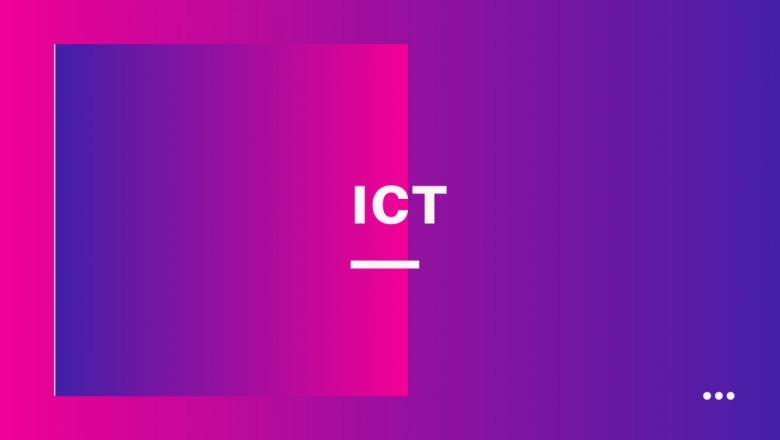views

Identity Verification Market - Growth, Trends, COVID-19 Impact, and Forecasts (2021 - 2026)
Adoption of solutions through stringent regulations and the need for compliance are influencing the market growth. The regulatory authorities have now become more stringent toward KYC (Know Your Customer) and AML (Anti-money Laundering) compliance, among reporting entities.
- With increasing online services, combined with smartphone penetration, verifying identities digitally are becoming crucial for both businesses and governments. The regulatory authorities are increasingly becoming stringent toward KYC and AML compliance among businesses, to control financial crime. FATF (Financial Action Task Force) increased the scope of reporting entities and recommended the member countries to oblige to the legal professionals, and art dealers and virtual asset dealers to perform AML screening on their customers.
- The European Union launched the fifth AML directive under which the identity verification threshold for the prepaid card industry was reduced from EUR 250 to EUR 150. Additionally, the scope of AML regulations is further enhanced. Moreover, government bodies, worldwide, emphasize on creating stringent regulations to curb identity theft and make efforts, to get the global population under the legal identity umbrella. The UN and World Bank ID4D initiatives aim to provide everyone on the planet with a legal identity, by 2030.
- The growing number of financial frauds in businesses is influencing the rise of identity verification solutions for businesses. According to a survey by the American Express in 2019, about 27% of the sales ended up in fraudulent transactions, influencing merchant decisions to deploy frictionless checkout systems. Moreover, around 69% of the merchants in the United States have spent a significant amount of time and money dealing with payment fraud.
- Identity theft is a major part of financial frauds that are challenging digital payment growth and adoption. Due to this, enterprises across the world are increasingly spending on solutions for identity verification. According to the Insurance Information Institute (III) report, 14.4 million identities were stolen in 2018, and about 3.3 million victims were liable for a financial penalty. Additionally, the report mentioned that over 40% of the stolen identities were used for the execution of credit card fraud.
- Moreover, enterprises across the world are increasingly spending on the digitization of their businesses, including their payment processes. According to a survey by Visa, over 80% of consumers mentioned digital-related benefits as motivating factors to shop. Due to such developments, SMEs are expected to be at the forefront of digital transformation, as they make up a large share of private sector businesses in the world. For example, according to the UK Parliament Business, Energy, and Industrial Strategy Committee, SMEs make up 99.9% of all private sector businesses in the United Kingdom and employ 16.3 million people or 60% of the UK’s private-sector workers.
- A growing trend in the identity verification space drives out previous industry standards, such as KBA and SSN verification, out of the picture, as they are considered insecure in the ever-changing technological environment. Equifax hack, which exposed 147.7 million American's personal information, stands as an example. Hence, businesses are looking for better solutions to perform identity authentication.
- Growing consumer propensity toward mobile payment solutions is further driving the market demand. According to the Mobile Economy Report of 2019, the mobile ecosystem generated USD 1.1 trillion in economic value, in 2018. Moreover, Asia-Pacific is expected to contribute toward the market growth, owing to the growing adoption of mobile payment solutions and e-commerce market. For instance, over 583 million people used mobile payment in China in 2018, an increase of 10.7%, according to the China Internet Network Information Center (CNNIC).
- The acceptance of digital payment methods is expected to improve post the COVID-19 outbreak and play a stronger role in the long term. With cash being seen as a potential carrier for the virus, governments and regulatory bodies are discouraging its use. For instance, the use of cash in Britain was halved, following government-imposed lockdown. In the United Kingdom, due to the COVID-19 outbreak, FATF guidelines have enabled customers to send selfies, and email scanned ID documents as proof for identification.
Complete Business Report@ https://www.statzyreports.com/report/sr499024/identity-verification-market
Key Market Trends
Adoption of Digital/Electronic Identity Verification Solution Accounts for Significant Share
- Digital identity verification is a market segment of distinct, coordinating products, wherein large vendors have portfolios of established products, while small vendors are constantly innovating to capture better market shares. The market is witnessing a consumer paradigm shift from manual identity verification systems to an electronic credentialing system that allows personal identity devices to interact. Each interacting device has an installed identity engine that acquires, holds, issues, and uses electronic credentials (e-credentials). These electronic credentials can be installed on personal identity devices, like smartphones, tablets, laptops, embedded systems, and/or personal computers.
- According to the Identity Theft Resource Center, in 2019, 525 data breaches were reported in the United States health/medical sector. Ten years earlier, the number stood at 70 breaches. With each data breach, the medical records are published on the dark web that exposes patients' date and place of birth, credit card info, etc. According to the same source, it was found that data breaches in the medical and healthcare sector constituted 35.64% of all data breaches in the United States in the measured period.
- For instance, in June 2019, Quest Diagnostics exposed close to potential 11.9 million patients' records. Furthermore, in July 2019, Quest's rival, LabCorp, was the target of a cyberattack that resulted in the company pulling parts of its IT system offline. The ransomware attack cost LabCorp USD 24 million to address.
- Owing to such incidents, digital identity verification is a key component of ensuring patient security. It is vital for healthcare organizations to take a Know Your Patient approach, through the adoption of an online digital identity verification system, which verifies a patient by comparing a photo of a patient's government-issued ID to a live photo. Furthermore, health insurance fraud is another area for consideration. When a patient's identity and his privacy are compromised, they suffer from financial fallout, and the industry needs to deal with fraudulent claims and other related legal fees.
- Digital identity is a potential multiplier of future economic value across several regions. Digital identity schemes act as a significant enabler in developing new products and solutions, and significantly reducing operational costs for relying parties. For instance, the potential value to the UK economy of utilizing smart technology, including digital identity verification systems, has been estimated to be as high as EUR 58 billion by the end of FY 2020. The costs of continued inaction are projected to far outweigh the likely cost of delivering solutions. The potential benefits via fraud reduction alone run to multiple EUR billions/year.
Asia-Pacific to Witness Significant Market Growth
- Asia-Pacific is expected to provide significant market growth for identity verification over the forecast period. In recent years, the region witnessed accelerated growth in digital banking sector, where more fintech and newly licensed virtual banks are approaching this market to address the unbanked segment, while traditional banks are being in transformation stage to manage costs and achieve operational efficiency in this increasingly competitive landscape. However, digitization has exposed businesses to new risks, such as online identity fraud, account takeovers, and data breaches.
- Fraudsters are increasingly growing advanced with the sophisticated technologies they now use to impersonate legitimate users. Deepfake technology poses a growing identity threat by using advanced artificial intelligence (AI) for creating seemingly real videos that take a person in an existing image or video, and it replaces them with someone else’s likeness.
- More Asian companies are integrating real-time liveness detection capabilities into their eKYC systems that ensure the remote user is physically present and can defend against spoofing attacks. As the digital economy grows, multi-factor biometric identity verification and certified liveness detection technologies are trending to evolve accordingly, to better serve and address the changing security needs of business and consumers.
- India experienced a rapid increase in cybercrime registration, with the country ranking fifth in terms of the overall DNS hijacks. According to Gemalto, India accounts for 37% of the global breaches in terms of records compromised or stolen. With the increasing number of malware and ransomware attacks in the country, it states a significant factor in driving the adoption of identity verification solutions.
- Furthermore, in China, in March 2020, China EverÂbright Bank (CEB) announced a blockchain-based supply chain finance solution by Ant Financial. By implementing Ant Financial’s Duo Chain technology, China EverÂbright Bank intends to improve the security of SCF, and eliminate fraudulent transactions. As reported by Sina, the Duo Chain platÂform allows users to complete identity verification and electronic signatures with CEB, while recording all relevant transactions to a distributed ledger for tracking purposes.
- Furthermore, in March 2020, the government of Singapore is preparing for the transition to a facial recognition program, which will eliminate the need for ID cards by 2022. The announcement of the installation of Photo kiosks in government agencies across Singapore will effectively inhibit the growth of the market.
Competitive Landscape
The identity verification market is highly fragmented with numerous competitors and many competing technologies that provide intense rivalry among the players. Key players are Acuant Inc., Authenteq Ltd, etc. Recent developments in the market are -
- April 2020 - IBM announced to resell Okta Identity Cloud because of a recent strategic partnership, with the identity management solution provider. The new security services that Okta covers are the end-to-end solution, customization, optimization of investments and accelerated adoptions.
- December 2019 - Ubisecure and Onfido announced a strategic partnership to enable Onfido’s identity verification technology for Ubisecure customers’ digital identity solutions. This new technology partnership provides a combined solution stack for customers, whereby Onfido will effortlessly and securely verify a user identity at the onboarding stage, with Ubisecure’s technology enabling seamless ongoing management of that identity.
Reasons to Purchase this report: https://www.statzyreports.com/report/sr499024/identity-verification-market
- The market estimate (ME) sheet in Excel format
- 3 months of analyst support
For sample report please visit :
Contact Us:
Statzy Market Research
Email : sales@statzyreports.com
Emsil: info@statzyreports.com
(IN) +918484035727
(US) +1415-871-0483
Website : www.statzyreports.com












